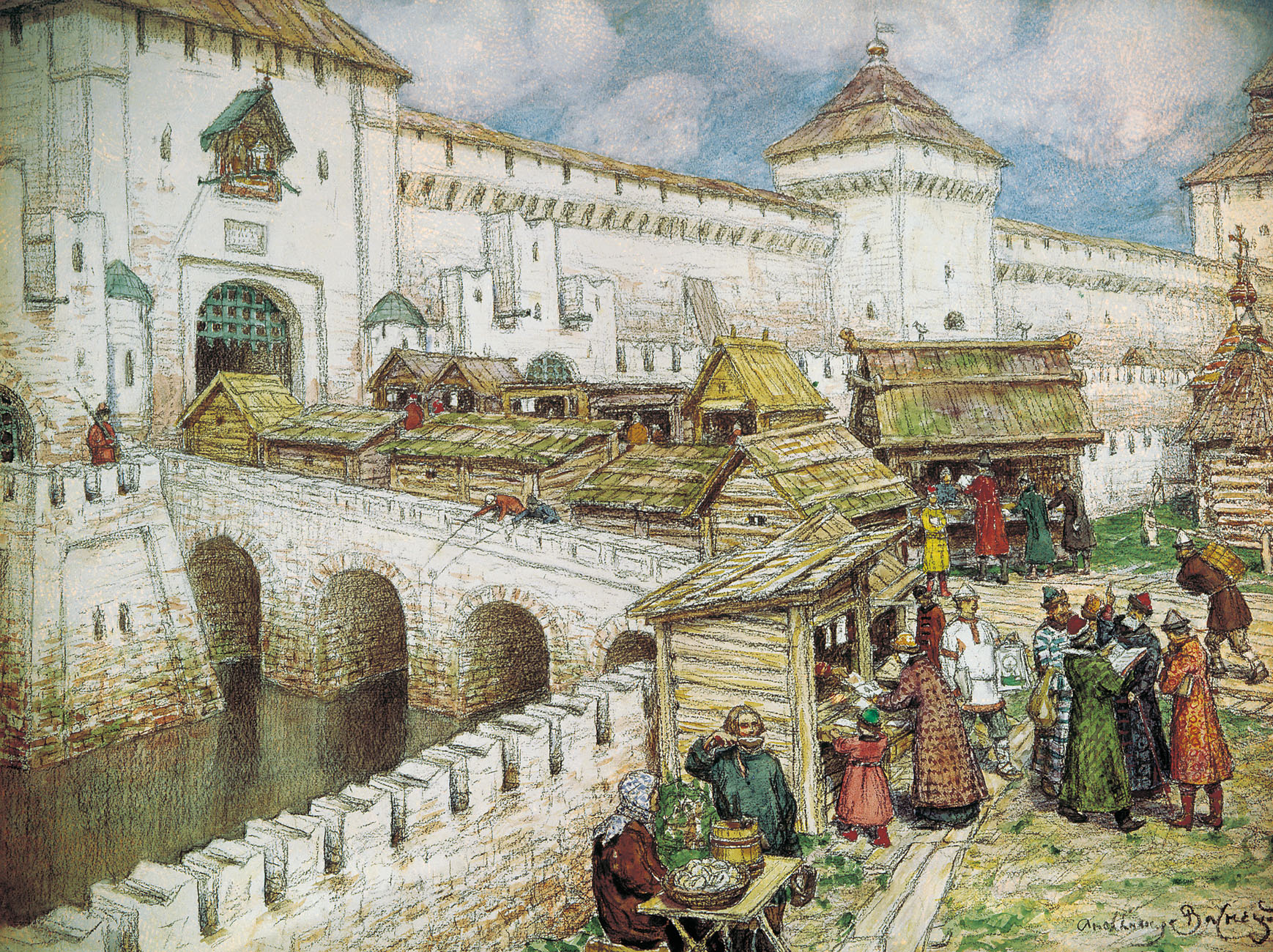The Red Square is the
largest and without doubt on of the best known squares in Russia and the world. Together with St. Basil’s Cathedral and the Kremlin, it has become one of the most famous symbols of the
country. I came to know about its existence thanks to a magazine article that I
read when I was a child. The magazine had without doubt been bought by my
stepfather, given its main article about Russia. It shown pictures of the Red
Square and an impressive military parade commemorating victory over the German oppressors
of WWII.
The name of the place obviously evokes the colour of communism, but interestingly it is much older than the ideology and surprisingly unrelated. It is also unconnected to the colour of its surrounding bricks, its name in fact originating from the Russian word krasnaya, which means “beautiful” but later evolved into its meaning of “red”.
Its origin is, however, indeed related to
war and the construction of Moscow’s Kremlin. Ivan the Great ordered clearing
all the east side of the fortification to be used as a shooting range in times
of war and thus the square was born. In times of peace it was quickly recognised
by merchants as a fantastic place to sell their goods, given its central
location and vast expanse.
History is constantly reshaping the mixed nature of this place. It was frequently used during the cold war for military parades, but it has again become a centre for commerce and tourism around Lenin’s mausoleum and the Kremlin that compelled its creation. The best thing about this place is that it really is what the observer wants it to be. For my stepfather, a symbol of the Soviet Union and its glorious history. For the tourist one of the most majestic landmarks on earth once they fathom the intricate architecture of St Basil’s cathedral and the cobble street under their feet. For the Muscovite merchant, the best place to make their day’s work.
| Military parade celebrating the 67th anniversary of the great patriotic war |
The name of the place obviously evokes the colour of communism, but interestingly it is much older than the ideology and surprisingly unrelated. It is also unconnected to the colour of its surrounding bricks, its name in fact originating from the Russian word krasnaya, which means “beautiful” but later evolved into its meaning of “red”.
 |
| Moscow's Kremlin, 15th century |
History is constantly reshaping the mixed nature of this place. It was frequently used during the cold war for military parades, but it has again become a centre for commerce and tourism around Lenin’s mausoleum and the Kremlin that compelled its creation. The best thing about this place is that it really is what the observer wants it to be. For my stepfather, a symbol of the Soviet Union and its glorious history. For the tourist one of the most majestic landmarks on earth once they fathom the intricate architecture of St Basil’s cathedral and the cobble street under their feet. For the Muscovite merchant, the best place to make their day’s work.
 |
| The Red Square today |
No comments:
Post a Comment